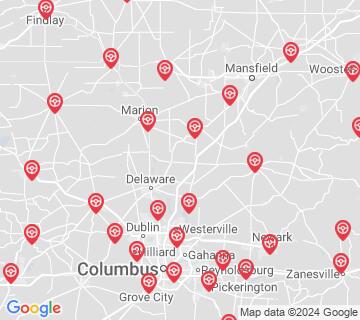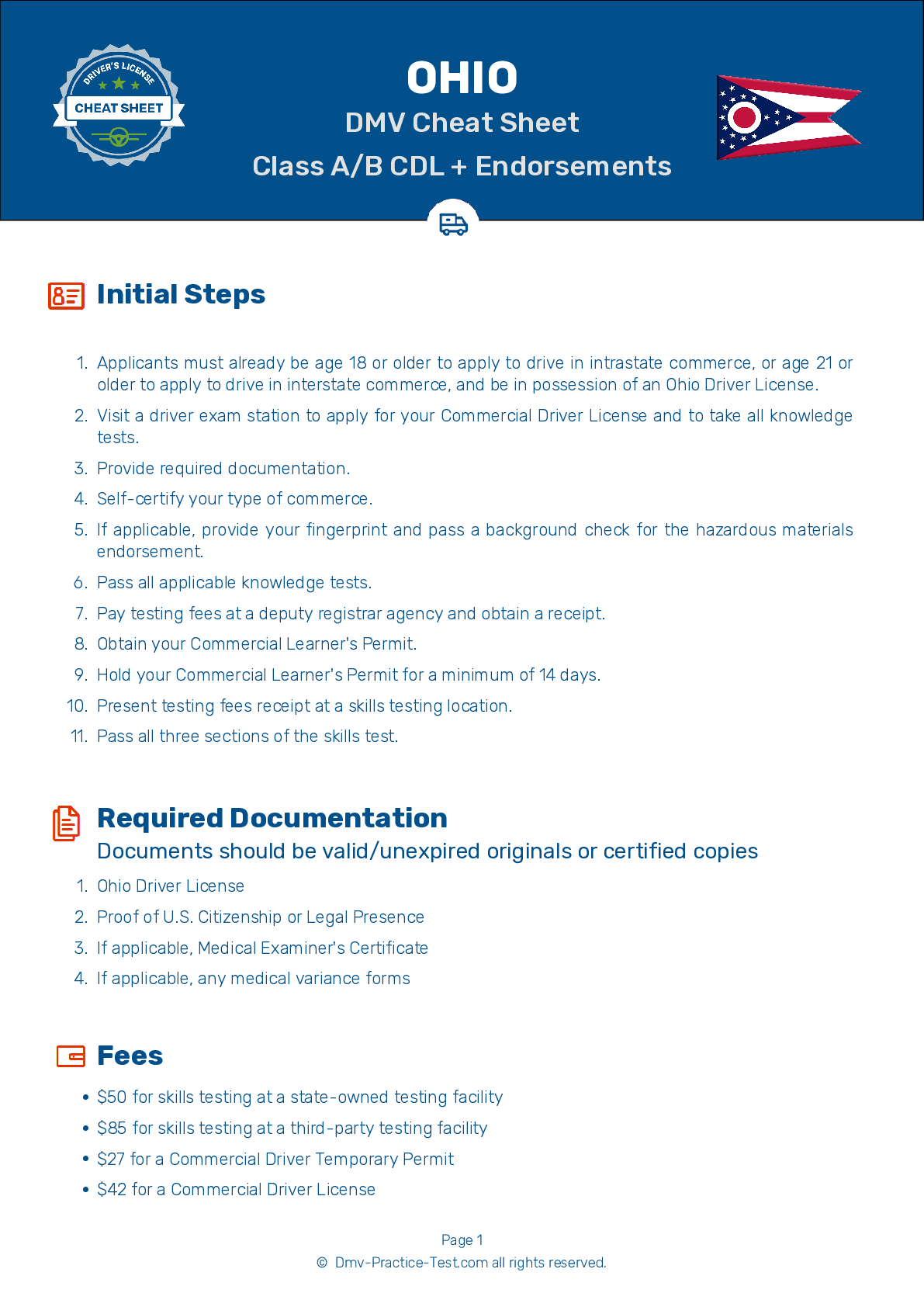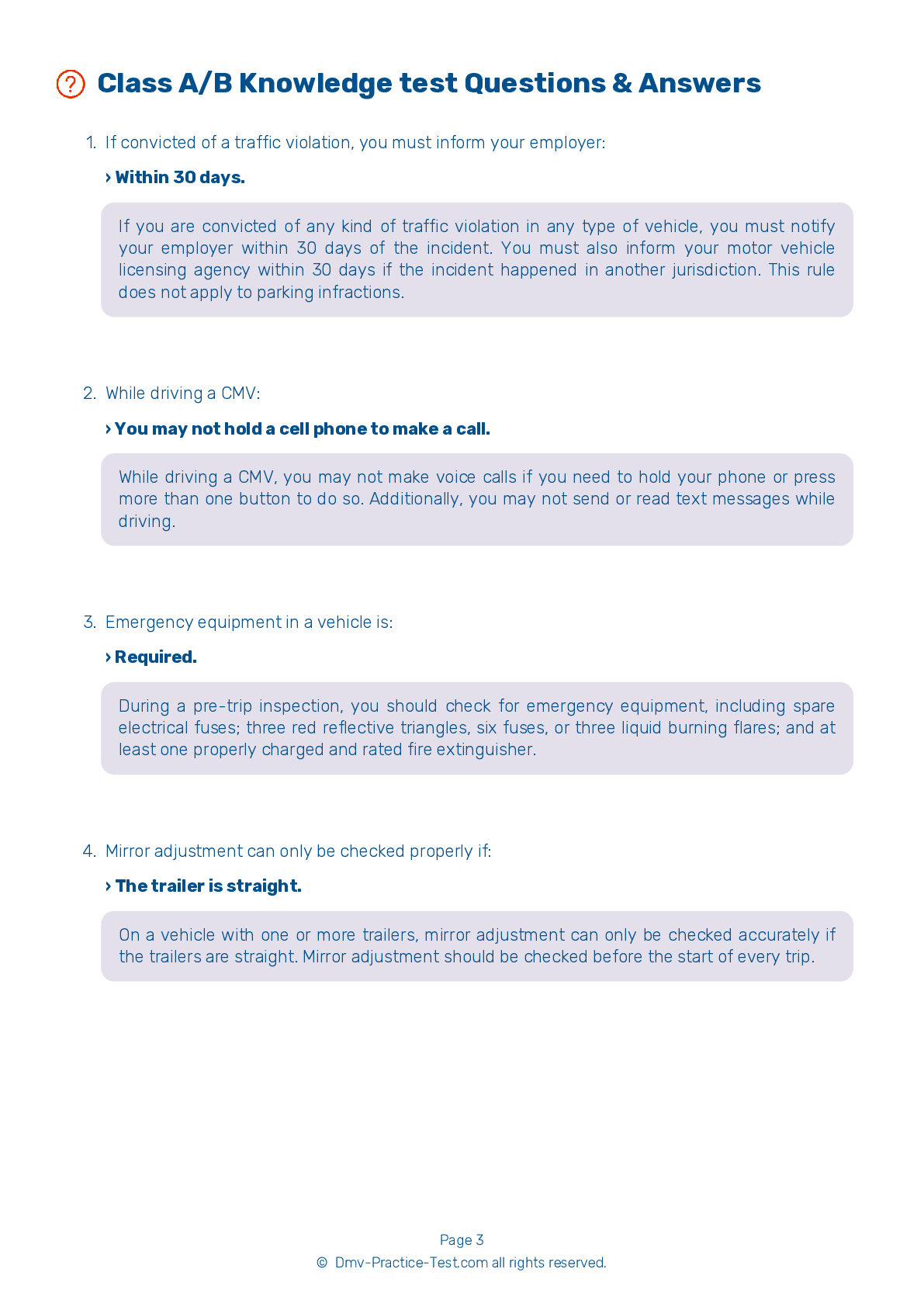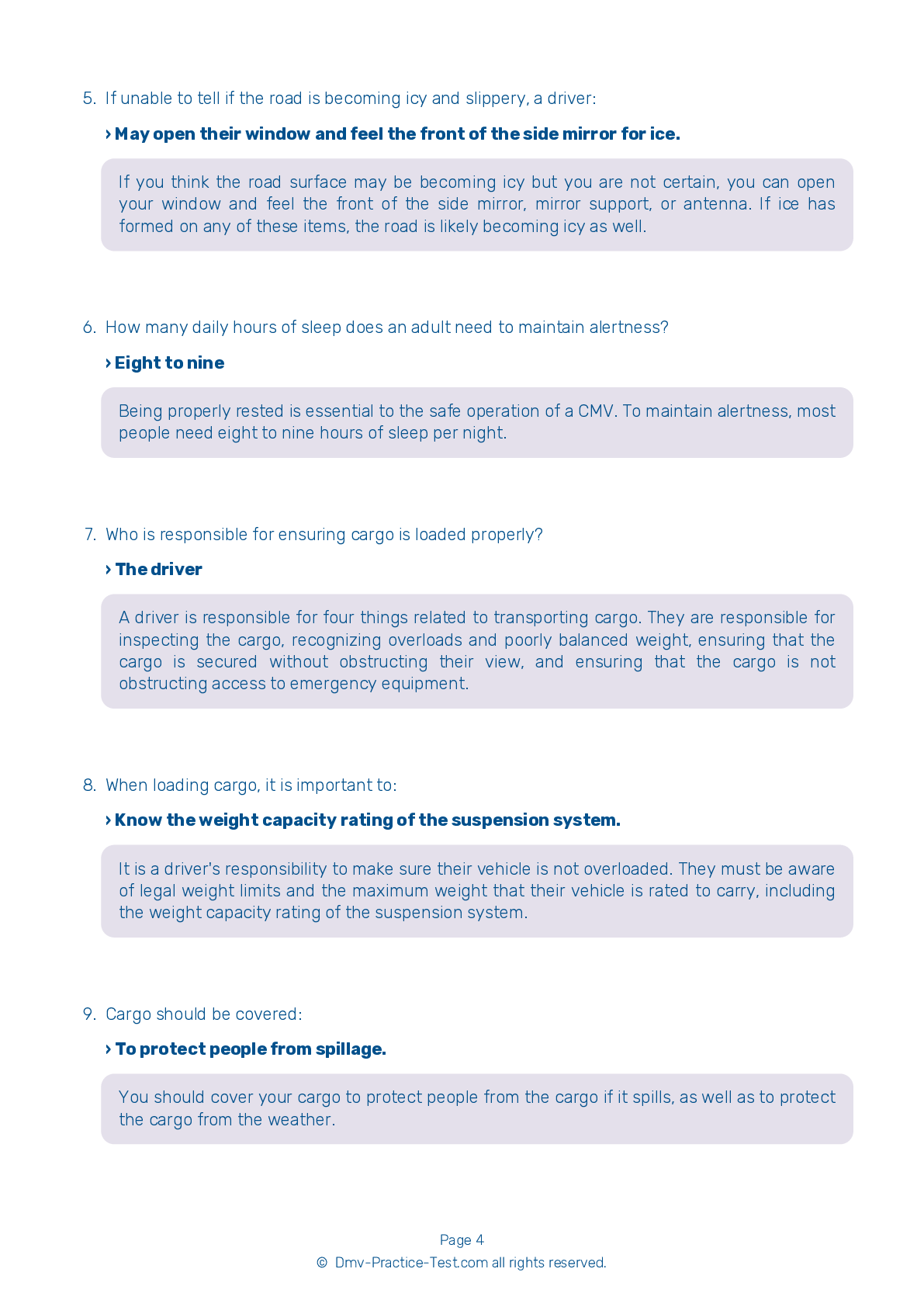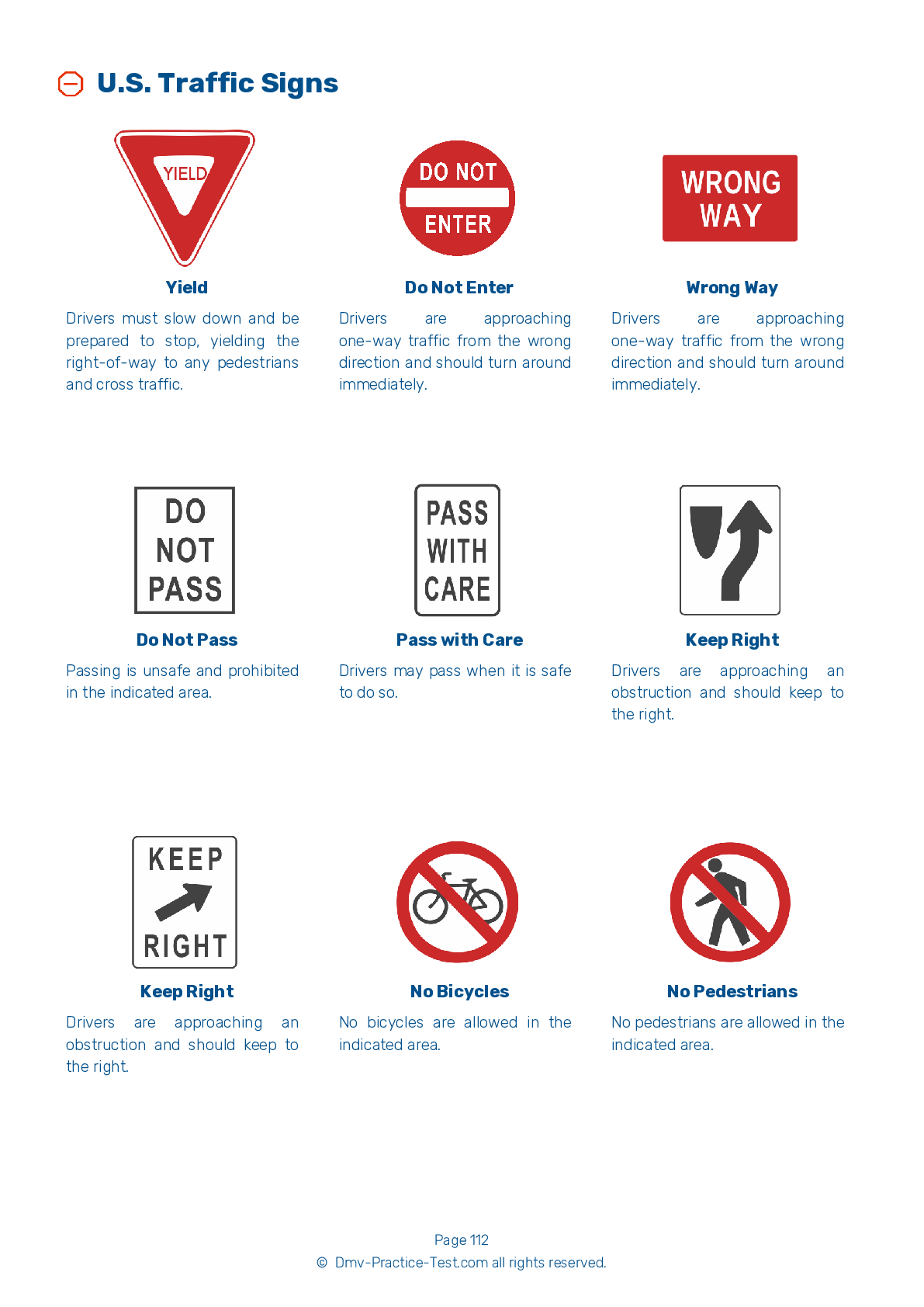Air Brakes #2
Air Brakes Endorsement Test | Ohio 2025 #2 Page 3 of 4
Train for FREE online with our Ohio CDL air brake test. The official exam test consists of several obligatory parts, with all of them checking your knowledge of different blocks of road rules. If you need to obtain a OH Class A/Class B driver license in 2025, practice as much as possible. Free sample tests published on our website will help you check and improve your knowledge and boost your grades. Please bear in mind that the requirements for CDL may vary from state to state.
25
20
20
13 . Air tank drains:
Compressed air in an air brake system usually has a certain amount of water and oil in it. This can harm the system if allowed to accumulate. Air tanks have drain valves to aid in removing water and oil from the compressed air.
14 . What does an air compressor do in an air brake system?
In an air brake system, the air compressor pumps air into the air storage tanks. The air compressor is controlled by the air compressor governor.
15 . In a vehicle with dual parking control valves, a separate air tank can be used:
In a vehicle with dual parking control valves, there is a separate air tank that can be used to temporarily release the spring brakes if they have been activated due to low air pressure. Pushing in the proper control will release the spring brakes for a short period of time, allowing the driver to move the vehicle in an emergency.
16 . Failing to drain air tanks could result in:
In an air brake system, the air tanks must be periodically drained to remove accumulations of water and compressor oil. If water is not removed, it could freeze in cold weather and cause brake failure.
17 . Before driving a vehicle with air brakes, you should ensure that the ____ come on automatically when air pressure falls below 45 psi.
Before driving a vehicle with air brakes, you should ensure that the spring brakes come on automatically when air tank pressure falls to a level between 20 and 45 psi. You can do this by chocking the wheels and releasing air from the braking system by stepping on and off the brake pedal. Once the pressure levels drop to an unsafe level, the parking brake valve should pop out and spring brakes should come on.
18 . What kind of brakes do most newer heavy-duty trucks use?
Most newer heavy-duty vehicles use dual air brake systems. A dual air brake system has two separate air brake systems which use a single set of brake controls.
Search the best driving school in your neighbourhood
2025 Ohio | Frequently Asked Questions
To acquire a CDL Hazmat endorsement in Ohio, first, you must hold a valid Ohio CDL. Then, pass the Hazmat knowledge test at your local BMV. You'll also need to undergo a TSA background check. Lastly, submit your application with the appropriate fees to the Ohio Bureau of Motor Vehicles (BMV). The endorsement will be added upon approval.
To obtain a CDL Hazmat license, you must have a valid Commercial Driver's License (CDL). You also need to pass the Hazardous Materials Endorsement Knowledge Test. A Transportation Security Administration (TSA) background check is required. Lastly, you must be at least 21 years old and be able to read and speak English adequately.
When applying for a CDL Hazmat endorsement in Ohio, you'll need your current Ohio CDL. You should also have proof of U.S. citizenship or legal status, such as a birth certificate, passport, or immigration documents. Additionally, you'll need to provide your Social Security number and complete a TSA security threat assessment application, which includes fingerprinting and a background check.
Yes, there is a dedicated written test for the CDL Hazmat endorsement. The Hazardous Materials Endorsement Knowledge Test is designed to evaluate your understanding of the rules and regulations of transporting hazardous materials. It covers topics such as loading and unloading, bulk packaging marking, driving and parking rules, and emergency response procedures.
The written test for the CDL Hazmat endorsement covers a variety of subjects related to hazardous materials. These include identifying different types of hazardous materials, understanding shipping papers, placarding rules, loading and unloading procedures, driving and parking rules, emergency response procedures, and how to handle hazardous materials safely and effectively.
Yes, there are additional charges associated with acquiring a CDL Hazmat endorsement in Ohio. These include fees for the knowledge test, endorsement application, fingerprinting, and background check. The exact amount may vary, so it's advised to check with the Ohio Bureau of Motor Vehicles or a local DMV office for current rates.
Yes, obtaining a CDL Hazmat endorsement requires a background check and security clearance. This is mandated by the Transportation Security Administration (TSA). The process includes fingerprinting and a check of criminal, immigration, and mental health records. The goal is to ensure that hazardous materials are transported safely and securely.
Yes, specialized training and certification are mandatory for a CDL Hazmat endorsement in Ohio. Applicants must pass a written knowledge test that covers hazardous materials regulations and safety procedures. Once you pass the test, the endorsement is added to your Commercial Driver's License. This ensures you are equipped with the necessary knowledge to handle hazardous materials.
No, you cannot legally transport hazardous materials without a valid CDL Hazmat endorsement in Ohio. The endorsement is required to ensure the driver understands the safety procedures and regulations related to transporting hazardous materials. Violating this can result in hefty fines, suspension of your CDL, or even imprisonment.
You can add a CDL Hazmat endorsement to your current CDL license without needing a new application. However, you must pass the Hazmat knowledge test and undergo a TSA background check. Once cleared, the Hazmat endorsement will be added to your existing CDL. Remember, your CDL must be valid and in good standing for this process.
